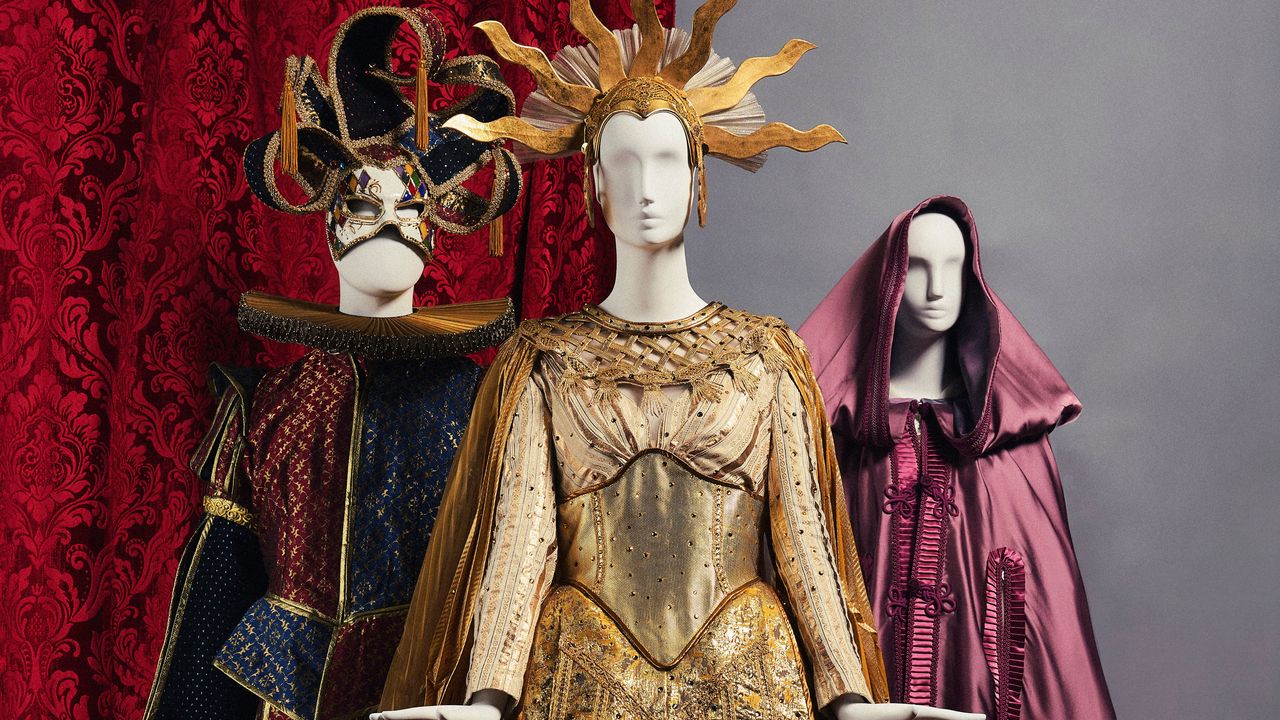For Sosa—a Broadway mainstay who got his start at New York’s storied Grace Costumes shop working with opera divas Beverly Sills and Denyce Graves— Masquerade represented a chance to “tap into my reservoir of things that I’ve wanted to design but never got a chance.” He told Vogue that the production’s official crystal partner, Preciosa, opened up their coffers and let him be a kid in their candy store. (They also provided some 30,000 crystals for the musical’s crashing chandelier.)
“I wanted to approach this like I was doing a film, where the camera is right in your face,” Sosa continued. “The audience here is right on top of you, so they see every detail—front, back, side, and under. That allowed us to really show off some really cool craftsmanship that you won’t see on a stage.”
Yet the production’s performers won’t be the only people dolled up: Masquerade requires audience members to “dress extravagantly” in black, white, or silver and to don a mask. (Formichetti designed two for this purpose: one, featuring custom lace and embroidery—“a little punk and slightly erotic”—is included with admission; the other, more elaborate mask is available for purchase.)
Paulus (Jagged Little Pill, Waitress), who has been developing Masquerade for more than two years, drew her own inspiration from the grand balls of fin de siècle Paris—“epic, theatrical events for which people would spend a year preparing,” she noted.
“Tapping into this history of masquerades and asking the audience to be a partner—it starts with, ‘What are you gonna wear?” she added. “And you’re already participating. Our lives can be very casual these days, and the idea of not spectacle, but occasion is really exciting.”
Ahead of the start of performances later this month, Formichetti, Sosa, and Paulus gave Vogue an exclusive look at Masquerade’s masks, costumes, and overall reinvention of a classic work of musical theater.
A mirrored mask for the Phantom
Photo: César Buitrago For Masquerade


.jpeg)



